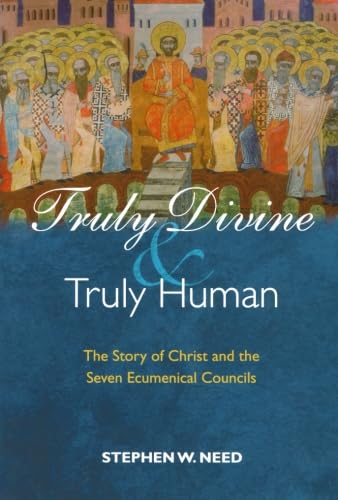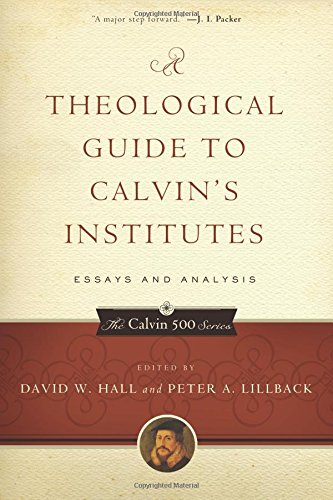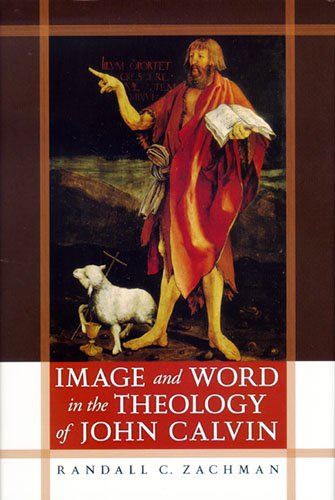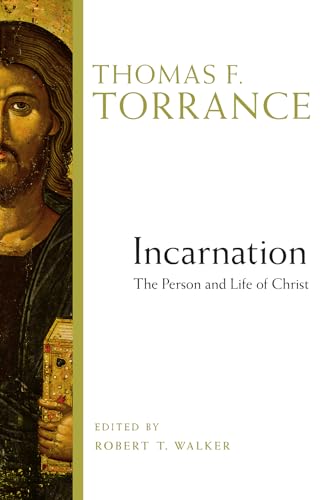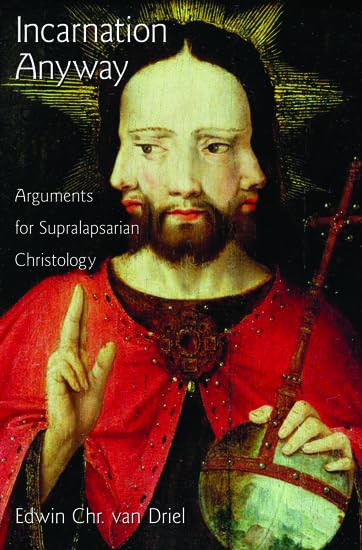Truly Divine and Truly Human: The Story of Christ and the Seven Ecumenical Councils
Written by Stephen W. Need Reviewed By Justin StratisThis modest volume written by Anglican scholar Stephen Need concerns the development of orthodox Christology as seen through the lens of the seven great ecumenical councils. Written primarily for students, the text carries on in a self-consciously pedagogical style and is fitted with such helpful tools as maps, brief historical excurses, photos, a glossary of key terms, a chronology of the councils with reference to important places, figures, and circumstances, and even an annotated bibliography. In this vein, the author’s intentions are simple: “In the end, anyone reading this book should be able to see what the seven ecumenical councils were basically all about and why Jesus Christ gradually came to be portrayed as ‘truly divine and truly human’ ” (p. xvi).
Need sets the stage in the first chapter by identifying the root of Christological reflection in the early church’s communal worship and confession. By considering certain titles given to Jesus in the New Testament (Lord, Savior, Son of God, Son of Man, Christ), Need argues that the early Christians perceived a “special relationship” between Jesus and God. Indeed, their convictions concerning this relationship are perhaps clearest in the titles “Wisdom” and “Word,” by which they sought to express some notion of Jesus’ pre-existence and unique dignity. Yet despite these proto-affirmations about Jesus, “it is less clear that in the early stages [Christians] thought of him in exactly the same sense that the later councils were to think of him, that is as ‘God incarnate’ ” (p. 14). Thus, Need suggests, “the ‘high language’ [of the New Testament] had perhaps better be put in the category of poetry rather than philosophy or history” (ibid.).
Chapter two introduces the classic Antioch/Alexandria typology as a means of explaining various tensions in the first formal Christologies (with Theodore of Mopsuestia and Origen serving as mature examples, respectively). The Antiochene approach was more “this worldly” and thus concerned with the authentic humanity of Christ, while the Alexandrian approach was more “other worldly” and so focused on Christ’s divinity. Hence, a brief discussion of the Aristotelian and Platonic worldviews ensues, though Need qualifies their influence by noting the Fathers’ concern over matters of biblical interpretation and salvation as well.
In the following six chapters, Need offers a rather traditional account of the seven councils (Constantinople 553 and 680–81 share a chapter), with Nicaea 325 and Chalcedon 451 functioning as turning points in the story. As anticipated, the Antiochene/Alexandrian dialectic provides an explanatory framework throughout, though Need also introduces a threefold thematic structure that includes 1) Christology (the identity of Jesus Christ), 2) the importance of theological language (the search for appropriate terms), and 3) salvation (the consequences of Christology). By such means, for example, continuity is discovered between the seventh council, which concerned icons, and the preceding six, which concerned Christology proper.
Finally, Need offers some reflections on the relevance of the councils for today, recounting modern attempts to ground ecumenical dialogue on the soil of these early statements. While acknowledging some progress, Need notes that difficulties lie not only in the area of ecclesial reconciliation, but also in the feasibility of orthodox Christology for the modern and postmodern mind. In light of these obstacles, then, Need suggests, “The real value of the councils for contemporary Christians can be found not in slavishly following what the Fathers of the councils said simply because they said it, but rather in trying to appreciate more fully what they were trying to do and then doing it after them in our own very different circumstances today” (pp. 157–8).
As mentioned above, Need’s book is primarily pedagogical, and according to this criterion it should receive high praise. In leading his readers through deep theological waters, Need’s prose remains eminently readable, presupposing no background knowledge yet untangling the thorny issues with laudable facility (e.g., the enhypostatic/anhypostatic distinction). This is not a polemic work, and one gets the sense that there is no agenda lurking in the background (as can often be the case in such introductory texts). Thus, I suspect theological instructors and pastors of all stripes could happily make use of this volume.
Beyond pedagogy, Need’s book should also be commended for its shrewd presentation of the councils as “reference points” rather than cleanly delineated schools of thought (for a more detailed account of this approach, see Lewis Ayres, Nicaea and its Legacy: An Approach to Fourth-Century Trinitarian Theology[Oxford University Press, 2004]). Specialists will likely fault Need for his recourse to old typologies (though he is not unaware of their reductionistic nature), but in practice these distinctions tend to serve more as evaluative devices than historical categories.
One concern, however, is Need’s portrayal of the “development” of Christology and the relation of the councils to Scripture. For example, he seems to assume that the pluriform interpretation of the New Testament’s “high” Christological passages by the early church belies an ambiguity in the text itself (careful readers may here detect hints of James D. G. Dunn, whose Christology in the Making [SCM, 1980] is one of three books cited “for further reading” on the NT background). While it is granted that the Christology of the New Testament does not approach the philosophical precision of Nicaea or Chalcedon, it does not follow that lack of precision according to certain criteria justifies marginalizing the bold theological assertions of, for instance, Phil 2:5–11 as mere poetry. The idea of the apostles groping around trying to find words to express their “experience” of Christ seems to exclude prematurely the possibility that these “high” passages were not merely straining for expression, but actually succeeded in saying something new in light of the resurrection. Indeed, if certain historiographies struggle to account for nova in their reading of history, then so much the worse for these historiographies. It is therefore (at least) not inferior to suggest that the councils emerged not from certain inchoate, “poetic” utterances, but rather as attempts to correspond to the real Christological claims of the New Testament within a certain philosophical context in order to resolve a clash of interpretations. What remained the same throughout the debates was not just a similar “experience” of Christ, but the received texts of Scripture as well. In this respect, the homoousion may be considered more a hermeneutical judgment in kind than a Christological development (as David S. Yeago has argued in his essay “The New Testament and the Nicene Dogma,” in The Theological Interpretation of Scripture: Classic and Contemporary Readings [ed. Stephen E. Fowl; Oxford: Blackwell, 2001], 87–100).
Nevertheless, despite these points of disagreement, it should be emphasized that such matters do not overshadow the pedagogical achievement of Need’s very helpful volume, and so Truly Divine and Truly Human truly merits a spot on not a few syllabi.
Justin Stratis
University of Aberdeen
Aberdeen, Scotland, UK
Other Articles in this Issue
Why are we talking about preaching with power? Because of what Christianity is...
In the mid-twentieth century, one could readily find informed Protestant observers acknowledging the Calvinist tradition’s major missionary contribution...
The summer of 2007 was the wettest in Britain since records began, registering over twice the usual amount of rainfall between May and July...
How Far Beyond Chicago? Assessing Recent Attempts to Reframe the Inerrancy Debate
by Jason S. SextonThe doctrine of inerrancy has been a watershed issue among evangelicals in the West, perhaps now more evident than ever...
Quite apart from commentaries and hermeneutical textbooks, books on the Bible—its nature and ultimately its authority—have been appearing with daunting frequency of late


